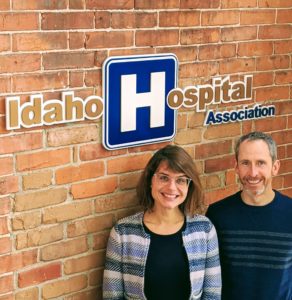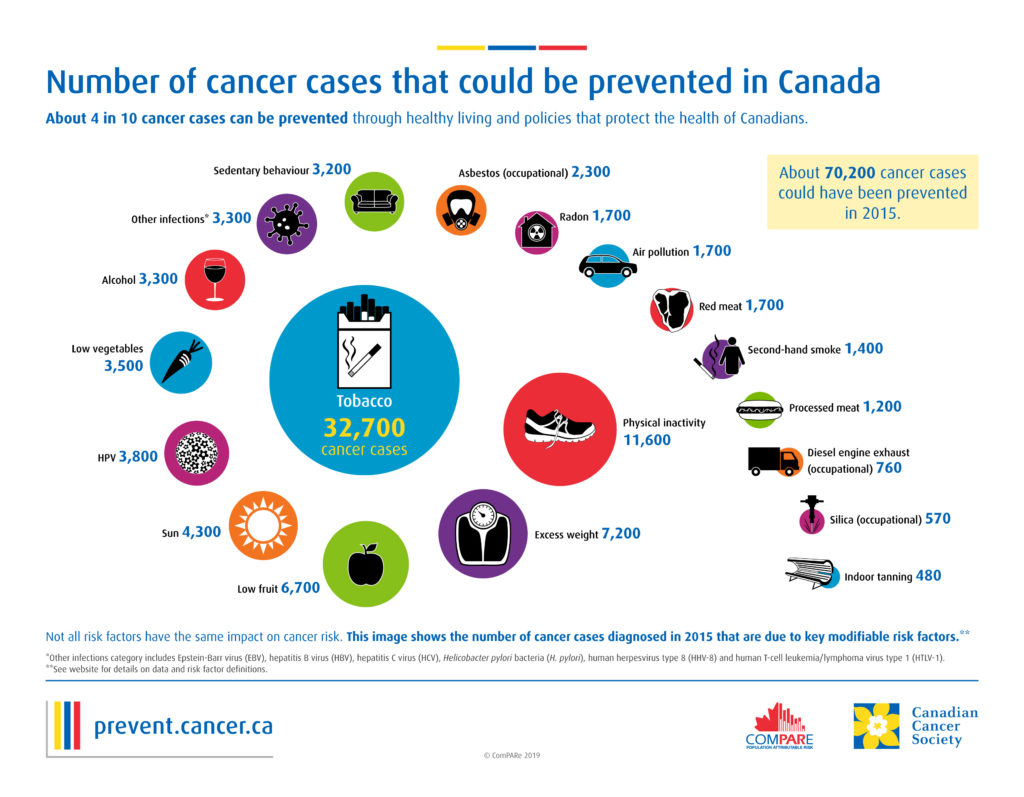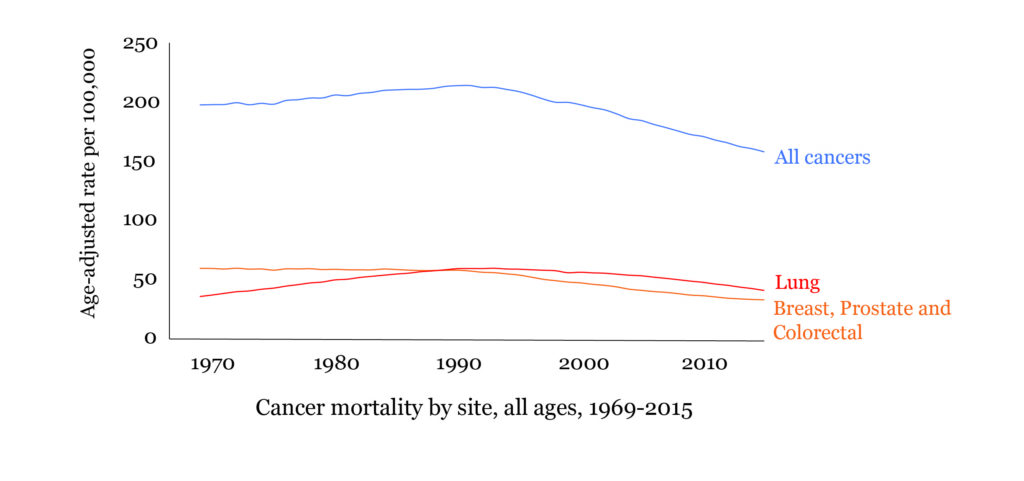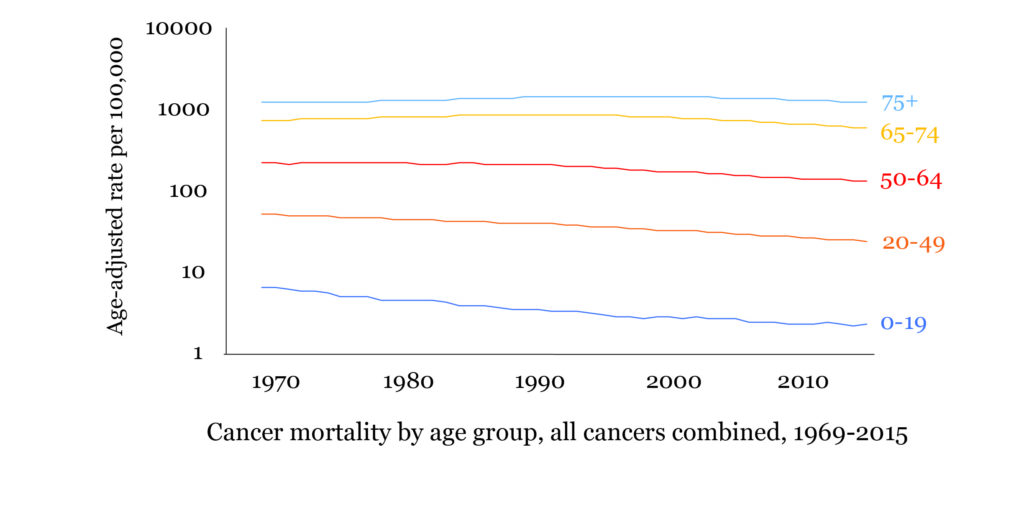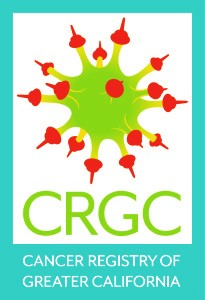
Robert H. McLaughlin
Interim Senior Director of Operations
Theresa Alfaro-Velcamp
Program Manager, User Experience Research
Cancer Registry of Greater California (CRGC)
Full Article
July 31, 2020
TITLE
Cancer Surveillance and the 2020 Economy: Thinking about Industrial/Occupational (I/O) Data in the COVID-19 Pandemic
INTRODUCTION
The ongoing COVID-19 pandemic elevates the importance of understanding occupation and employment data in relation to public health. Cancer registries and surveillance programs are now challenged to evaluate the effects of the global COVID-19 pandemic on cancer incidence, including 22 million job losses in April 2020 (See Table 1). Surveillance programs will seek to describe how the abrupt cessation of economic activities has changed routine environmental exposure risks for immunocompromised patients and survivors, especially those who may be or have recently been working in retirement or participating in the “gig” economy. Attention to industrial and occupational (I/O) data may enhance the long-term capacity for research and understanding of the cancer burden. As epidemiologists have shown in Japan, occupational exposures and the stress associated with job losses and financial insecurity may be significant risk factors for cancer.
The California Cancer Registry (CCR) with more than 5.8 million cases exemplifies a population-based census of cancer cases established with a mandate to attend to occupational risks for cancer. (CA Health & Safety Code § 103875(a) [2018]). Statewide cancer reporting began in 1988, conducted in accordance with the state’s Health and Safety Code. The recent orders to shelter in place (such as Executive Order N-33-20 issued in California on March 19, 2020) have meant—for millions of people—staying away from work, and suspending commutes as well as limiting in-person interactions associated with economic activities. The unprecedented circumstance coincides with a longstanding challenge that population-based cancer data remain “problematic to reach solid conclusions on the connection between economic crises and cancer mortality given the amount of time needed to account for the required induction period and the complexities involved in establishing causal links.” (Martin-Moreno, 2010, 2525). The present context is, nevertheless, ripe for data collection.
ADVANCING THE COLLECTION AND VALUE OF I/O DATA
Acute questions in cancer epidemiology are forming about connections between the COVID-19 pandemic and the cancer burden. Understanding the new, everyday environmental exposure risks for immunocompromised patients and survivors is critical. Mitigating the implications of suspending preventive and early detection services in response to shelter orders, impacting services such as melanoma screening, cervical screening, breast mammography, and colonoscopy, will also have significant effects on patients and survivors.
Looking ahead, longer-term economic effects of the COVID-19 pandemic are likely to further impact cancer data. Improving the I/O data will help render some of the effects cognizable, discernible, and actionable. The challenges of systematic collection of I/O data have, however, been recognized throughout the performance of statewide cancer surveillance. From 1990 through 2002, the Los Angeles Cancer Surveillance Program and the CCR employed Industry and Occupational coders that developed coding programs that were used until 2002. With budget cuts, I/O coding of statewide CCR data was subsequently suspended. In 2007, National Institute of Occupational Safety and Health (NIOSH) funded the CCR to conduct a pilot study to improve coding of registry I/O data. This pilot program focused on coding construction occupations and assessing cancer incidence among construction workers. The pilot program revealed that of the 2,843,003 industry cases reported from 1998-2008, 778,785 were “other”, 743,517 were unemployed or unknown, and 657,208 were uncoded (RD Cress, 2009, slides 11-13). This pilot study showed both the importance of tracking I/O data in an informal economy context as well as persistent ambiguities in I/O information collected from individual cancer cases.
To date, industry and occupational data collected through the CCR are broken down according to the National Institute of Occupational Safety and Health (NIOSH) categories for the formal economy. North American Association of Central Cancer Registries (NAACCR) Presentations by Dennis Deapen (June 23, 2010) and Geoffrey Calvert (June 23, 2010) noted the need to improve occupational data collection in cancer registries and proposed increased trainings. The lack of detail, uniformity, and overall quality of these data where present in medical records is a persistent difficulty for their compilation and use in cancer surveillance. Efforts to improve this situation would conform to the statutory mandate in California to “include the monitoring of cancers associated with suspected carcinogens encountered by the general public both in occupational locations and in the environment generally.” (CA Health & Safety Code § 103875(a) (2018)).
One critical area for improvement with connection to the economic effects of the COVID pandemic is the need to capture the informal economy that has expanded with particular visibility of “gig economy,” such as Uber/Lyft drivers. The role of the “gig economy” workers—roughly defined as those involved in low-skilled, low-paid, on-demand service work such as chauffeur driving, goods delivery, home cleaning, gardening and errand-running—is an increasingly significant part of the economy, yet not routinely accounted for in cancer surveillance owing to the limitations of existing data sources. According to the Harvard Business Review in March-April 2018, “approximately 150 million workers in North America and Western Europe have left the relatively stable confines of organizational life—sometimes by choice, sometimes not—to work as independent contractors,” and they define the gig economy. It has been noted that the number of contingent workers has taken off with the Great Recession of 2008 (and the loss of full-time, formal employment) along with the rise of the on-demand labor platforms. (V.B. Dubal, 2017, 752 note 52) Their working lives have also been hard hit by the COVID-19 pandemic. To the extent that their activities have not been fully captured in the categories of the NIOSH insofar as the NIOSH categories, I/O data can be enhanced to improve the utility of cancer data about the past, present, and future cancer patients and survivors among them.
CONSIDERATIONS FOR DATA COLLECTION, LINKAGES AND SURVEILLANCE RESEARCH
Improvements in I/O data could be an expansive field enabling correlations of industrial and occupational with data about health insurance status and the accessibility and affordability of care. These data may, in turn, relate to patterns and trends that characterize cancer incidence rates and detailed data including the cancer stage upon diagnosis. Cancer registries could begin with asking questions such as the following:
- What categories of work and contextual information—particularly in the informal economy—are conspicuously absent from the reported cancer I/O data? Employment Development Department of the State of California (EDD) data are inclusive, for example, of commuting data for “worked at home,” which may be linked to participation rates in the informal economy. The data also include worker categories such as “self-employed in owned not incorporated business” and “unpaid family workers,” that may map to participation in the informal economy in ways not presently captured in NIOSH-based I/O data reported to cancer registries.
- What categories of work might benefit cancer surveillance if they offered greater specification and detail? In the context of the COVID-19 pandemic, specific jobs—beyond those associated with medical services—have garnered attention as presenting elevated health risks—postal workers and delivery service drivers (Amazon, UPS, etc.), Uber/Lyft ridesharing service drivers, home care service providers, public transportation personnel, etc. Other occupations have been more suited to performance with relative isolation through remote and at-home work. Will such distinctions on social interaction in occupations prove salient to the assessing the cancer burden and the science of identifying associations between environmental exposures and cancer incidence rates?
- How does the distribution of insurance coverage data associated with cancer cases compare with unreported I/O data? Do the insurance data indicate elevated financial insecurity among cases with unreported I/O data, such that efforts to improve I/O coding standards could deliver attention to a population in immediate need of better cancer surveillance? Employment status is closely related with insurance coverage, and that those who work in the informal economy may be more likely to have payor data coded as “not insured/not insured self-pay” than those working in the formal economy.
- How likely is “work in retirement” to impact the accuracy and completeness of I/O data? In a preliminary analysis of CRGC data from 2000 through 2016, 6.54% women with cervical cancer identified as retired, signaling the potential significance of this category of I/O data to understanding how cervical cancer affects women, when, and in response to what range of key risk factors. The only I/O categories associated with a larger percentage of cervical cancers were: Occupation not reported (53.85%); Housewife (9.62%); and Never worked (7.64%) (CRGC unpublished cancer rates, 2019).
RESEARCH OPPORTUNITIES
In addition to operational and data quality questions, a data-driven response to the COVID-19 pandemic may also enable ambitious studies. For example, cancer surveillance scientists might evaluate of the hypothesis that stress associated with financial insecurity contributes to elevated risks of some cancers. Song et al. explored this hypothesis in a cohort study of 101,708 Japanese participants over a four-year period in the early 1990s, concluding that “long-term perceived stress level showed that individuals with constantly high perceived stress level had an 11% (95% confidence interval 1-22%) excess risk for cancer compared to subjects with persistently low stress levels.” (Song et al, 2017). Data collection in California could be marshaled within the growing population of cancer survivors for stress associated with acute job loss and financial insecurity, consistent with the state mandate for understanding cancer risks to the general public in relation to occupations and the environment. Using a case-control model similar to the Japanese study, reported job losses and financial insecurity associated with significant economic events might prove a useful indicator of long-term stress among cancer patients and survivors in the wake of the COVID-19 pandemic. The unprecedented volume of job losses in the wake of the COVID-19 pandemic—millions in a few weeks—may be a measurable indicator of stress in the lives of workers. Future cancer patients will remember where they were and whether they were working during the Great Lockdown of 2020. Table 1 illustrates a comparison of recent job losses to other economic events with significant impact on employment.
Table 1: Historic U.S. Job Losses by Economic Event as reported on April 20, 2020 Source: Desjardins, 2020
| Significant Job Loss Event | Year | Estimated Jobs Lost |
| Great Lockdown | 2020 | 22.0 million |
| Great Recession | 2009 | 2.6 million |
| Dot-Com Bust | 2001 | 2.0 million |
| Double-Dip Recession | 1982 | 2.7 million |
| Volker Tightening | 1980 | 2.5 million |
| Stagflation | 1975 | 2.2. million |
The potential for analysis of I/O data in cancer surveillance is bolstered in California by the availability of data from the Employment Development Department (EDD). The EDD provides comprehensive county-level data that enables examination of employment, demographic and insurance information across all California counties. The EDD Data Library provides access to view and download data and information related to California industries, occupations, employment projections, wages, and labor force. The EDD data are informed by the American Community Survey inclusive of 5-year estimates for 2013-2017. The EDD Data Library also contains Occupational Employment Statistics (OES) Survey data collected from a sample of establishments and yielding employment and wage estimates by occupation, industry, and geographic area. The semiannual survey covers all non-farm industries. Data are collected by the Employment Development Department in cooperation with the Bureau of Labor Statistics, US Department of Labor. The OES Program estimates employment and wages for over 800 occupations from an annual sample of approximately 34,000 California employers. The data can be used to better understand California’s work force, employment markets, and public health risks and implications associated with work. This can be a first step in trying to better align cancer registry data and the informal economy work.
CONCLUSION
As the sciences of public health are called to action during the COVID-19 pandemic, the I/O data associated with cancer cases merit renewed, concerted attention as suggested by the various considerations mentioned above. The duty to address the COVID-19 pandemic in cancer registration and surveillance presents an opportunity to deliver this attention to I/O data and the informal economy more broadly.
REFERENCES
Ahuja, A. Opinion: The Cool Head, Why ‘Gig Health’ Matters: Workers in the fast-growing gig economy are vulnerable to illness. Financial Times. 25 May 2017 (Retrieved at: https://www.ft.com/content/bdc90c22-408f-11e7-82b6-896b95f30f58)
Cancer Registry of Greater California (CRGC) unpublished cancer rates, 2019. Cervix (occupation with >/= 50 individuals, 2000-2016).
CA Health & Safety Code § 103875(a) (2018) (California statewide cancer reporting mandate).
Calvert G. Collection and Use of Industry and Occupation Data IV: Development Training Materials to Improve Occupational Data Collection in Cancer Registries. North American Association of Central Cancer Registries (NAACCR) Annual Conference. June 23, 2010. Quebec City, Canada.
Centers for Disease Control and Prevention, 2018. Public Health Information Network Vocabulary Access and Distribution System (PHIN-VADS). (Retrieved at: https://phinvads.cdc.gov/vads/ViewValueSet.action?id=1445D71C-F37F-4504-8B6C-BA48C5A3F4CA#).
Chappelow J. Gig Economy. Investopedia. 25 June 2019. (Retrieved at: https://www.investopedia.com/terms/g/gig-economy.asp)
Cress RD. Improving Occupation and Information in Central Cancer Registries for Use in Occupational Cancer Surveillance. NAACCR June 13-29, 2009, San Diego, CA.
Deapen D. Collection and Use of Industry and Occupation Data: Opportunities and Challenges. NAACCR Annual Meeting. June 23, 2010, Quebec City, Canada.
Desjardins, J. These Charts Put the Historic U.S. Job Losses in Perspective. Visual Capitalist (April 17, 2020). (Retrieved at: https://www.visualcapitalist.com/charts-historic-u-s-job-losses-perspective/).
Dupal VB. Winng the Battle, Losing the War? Assessing the Impact of Misclassification Litigation on Workers in the Gig Economy. Wisconsin Law Review, 739, 2017.
Employment Development Department State of California (Retrieved at: https://www.labormarketinfo.edd.ca.gov/serp.html?q=sex%20workers;
https://www.bls.gov/oes/2018/may/oes_ca.htm).
Executive Order N-33-20, Executive Department, State of California (March 19, 2020).
Fedewa SA, Sauer AG, DeSantis C, Siegel RL, Jemal A. Disparities in cancer screening by occupational characteristics. Preventive Medicine, 105(5), Oct 2017, 311-318.
Fortin, J. A Quarantined Uber Driver’s Quest for Paid Sick Leave, The New York Times, April 4, 2020. (Retrieved at: https://www.nytimes.com/2020/04/04/business/coronavirus-uber.html?action=click&module=News&pgtype=Homepage)
Haddy, J. Amazon delivery drivers share what its like to be on the front lines of the coronavirus pandemic, including not having time to wash their hands and uncleaned vans, Business Insider, 2 April 2020. (Retrieved at: https://www.businessinsider.com/why-amazon-delivery-workers-feel-exposed-and-vulnerable-to-coronavirus-2020-3)
International Labour Organization, 2016-2020. Informal Economy: a hazardous activity. (Retireved at: https://www.ilo.org/safework/areasofwork/hazardous-work/WCMS_110305/lang–en/index.htm).
Landy R, Cheung LC, Schiffman M, Gage JC, Hyun N, Wentzensen N, Kinney WK, Castle PE, Fetterman B, Poitras NE, Lorey T, Sasieni PD, Katki HA. Preventive Medicine, 2017, 429-435.
Lee S, Chen L, Jung Y, Baezconde-Garbanati, L, Juon, H-S, Acculturation and Cancer Screening Among Asian Americans: Role of Health Insurance and Having a Regular Physician. J Community Health, 39, 2014, 201-212.
Luckhaupt, S. and Schumacher, P. Collection of Industry and Occupation (I&O) Data for Cancer Registry Professionals. 2014. Centers for Disease Control and Prevention (Retrieved at: https://www.cdc.gov/niosh/topics/coding/pdfs/Cancer_registrar_IandO_slides_forLA4-14-11_rev.pdf)
Marin-Moreno JM, Alfonso-Sanchez JL, Harris M, Lopez Valacarcel BG. The Effects of the Financial Crisis on Primary Prevention of Cancer. European Journal of Cancer 46, 2010,2525-2533.
National Program of Cancer Registries (NPCR) and Surveillance, Epidemiology & End Results (SEER), 2017. NPCR and SEER Incidence—U.S. Cancer Statistics Public Use Database Data Standards and Data Dictionary. (Retrieved at: https://www.cdc.gov/cancer/uscs/public-use/pdf/npcr-seer-public-use-database-data-dictionary-2001-2015-508.pdf)
North American Association of Central Cancer Registries (NAACCR) Data Dictionary: http://datadictionary.naaccr.org/default.aspx?c=10#270
Petriglieri G, Ashford SJ, Wrzesniewski A. Thriving in the Gig Economy. Harvard Business Review. March-April 2018. (Retrieved at: https://hbr.org/2018/03/thriving-in-the-gig-economy
Savitz DA, Andrews KW, Brinton LA. Occupation and Cervical Cancer. JOEM, 37, 3. March 1995, 357-361.
Silver SR, Tsai RJ, Morris CR, Boiano JM, Ju J, Scocozza MS, Calvert GM. Codability of industry and occupation information from cancer registry records: Differences by patient demographics, casefinding source, payor, and cancer type. Am J Ind Med, 61, 2018, 524-532.
Song, H, et al. Perceived stress level and risk of cancer incidence in a Japanese population: the Japan Public Health Center (JPHC)-based Prospective Study. Nature, Scientific Reports, 7: 12964, 2017, DOI:10.1038/s41598-017-13362-8.


